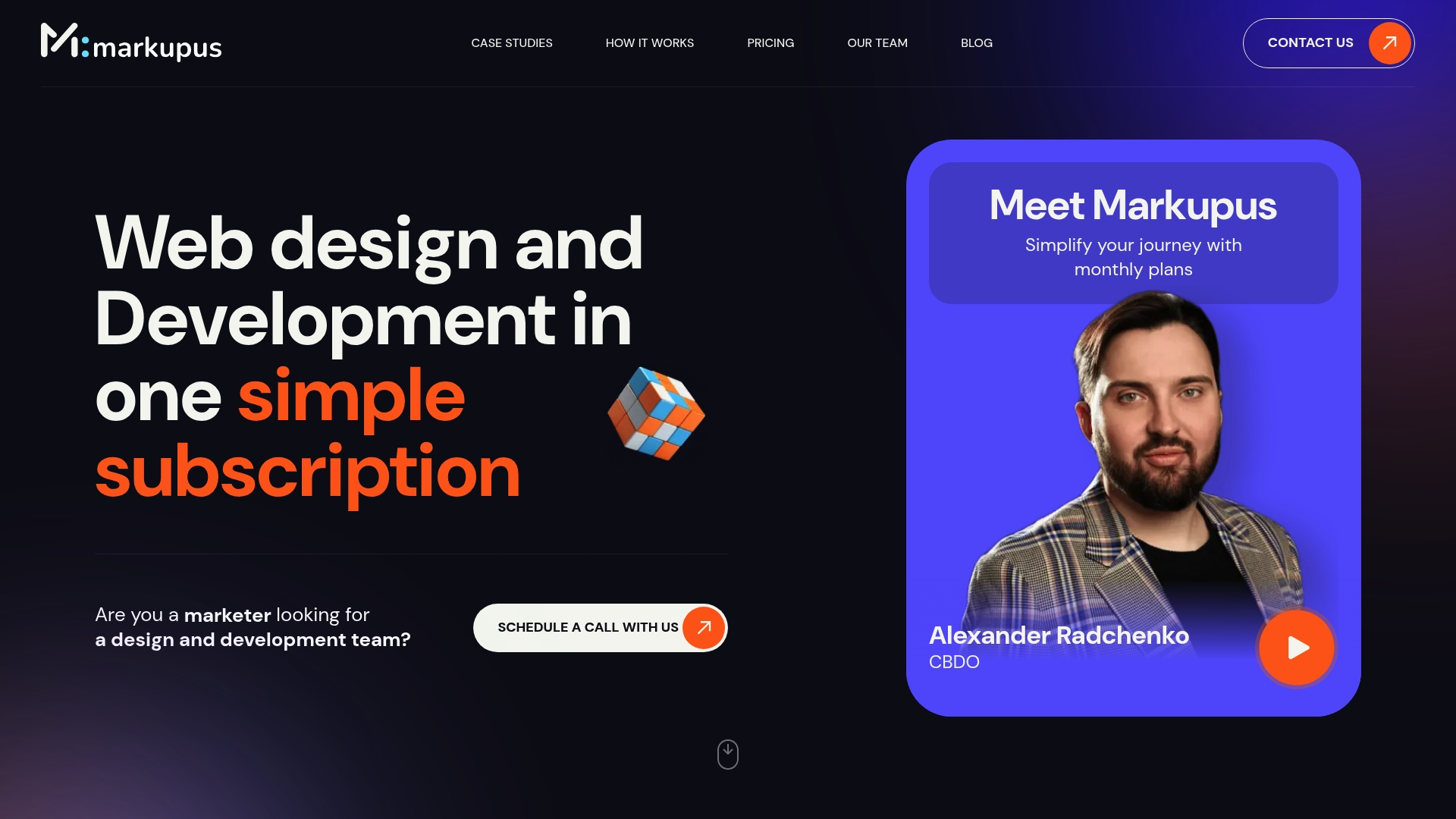Did you know that over half of all web users will leave a site if it loads too slowly or looks cluttered? Online attention spans are shrinking, and people expect instant, seamless experiences no matter what device they use. Fast load times, clean layouts, AI powered content, responsive design, thoughtful interactivity, and inclusive features now define success. Small improvements in these areas can have a dramatic impact on how visitors perceive your brand and how often they return.
Quick Summary
| Takeaway | Explanation |
|---|---|
| 1. Prioritize fast load times. | Users abandon slow websites—40% leave if it takes over three seconds to load, affecting engagement. |
| 2. Implement minimalist design. | A clean layout reduces clutter, improves navigation, and enhances user engagement. Focus on essential elements. |
| 3. Personalize content using AI. | AI adapts websites to individual user preferences, creating tailored experiences that enhance engagement and satisfaction. |
| 4. Optimize for mobile responsiveness. | Your site must function well on all devices—mobile users expect seamless experiences and quick load times. |
| 5. Ensure accessibility and SEO. | Make your website inclusive and SEO-friendly by following accessibility guidelines and improving content discoverability. |
Table of Contents
- Prioritize Fast Load Times For Improved User Experience
- Use Clean, Minimalist Layouts For Better Navigation
- Integrate AI And Automation For Personalized Content
- Optimize Mobile Responsiveness Across All Devices
- Leverage Interactive Design For User Engagement
- Apply Consistent Branding And Visual Hierarchy
- Ensure SEO-Friendly And Accessible Web Elements
1. Prioritize Fast Load Times for Improved User Experience
Web visitors are impatient. They want information fast and will abandon websites that test their patience. According to research from Bliss Drive, 40% of users will leave a website if it takes more than three seconds to load. This statistic reveals a critical truth: speed determines user engagement.
Load times are not just about convenience. They directly impact your business metrics. A single second of delay can reduce conversions by 7%. On mobile platforms, the stakes are even higher. Mobile research indicates that every additional second of loading time can decrease conversions by up to 20%. Over 53% of mobile visitors will abandon pages taking more than three seconds to load.
To improve your website speed, focus on several key optimization strategies:
- Compress and optimize images without sacrificing quality
- Implement browser caching to store website resources locally
- Minimize JavaScript and CSS files through code minification
- Use content delivery networks (CDNs) for faster global access
- Choose lightweight website themes and frameworks
Google also rewards faster websites with better search rankings. By prioritizing load times, you create a win-win scenario: improved user experience and enhanced search visibility. Invest time in performance optimization. Your users (and your conversion rates) will thank you.
2. Use Clean, Minimalist Layouts for Better Navigation
In the digital world where attention spans are shrinking, your website design can make or break user engagement. Minimalist layouts are not just a trend they are a strategic approach to creating intuitive user experiences. Research from Senna Labs reveals that simplified design can dramatically improve website performance and user interaction.
Minimalist design is about strategic subtraction. By removing unnecessary elements, you create a clear visual path that guides users exactly where they need to go. According to Web Anto, this approach reduces clutter, accelerates decision making, and supports better accessibility.
To implement a minimalist layout, focus on these key principles:
- Embrace whitespace as a powerful design element
- Use a limited color palette that creates visual harmony
- Establish clear typography hierarchy
- Simplify navigation menus
- Prioritize content that drives user action
The benefits extend beyond aesthetics. Minimalist designs typically load faster, work better on mobile devices, and communicate your message with crystal clarity. Read more about modern web design principles to understand how simplicity can transform user experience. Your goal is not just to look good but to create an effortless journey for your visitors.
3. Integrate AI and Automation for Personalized Content
The future of web design is intelligent. AI powered personalization transforms static websites into dynamic experiences that adapt to individual user needs. As highlighted by research on adaptive websites, statistical modeling can now optimize content structure and presentation in real time.
Artificial intelligence enables websites to learn from user interactions, creating tailored experiences that feel intuitive and engaging. Imagine a website that understands your preferences, anticipates your questions, and presents information exactly when you need it. This is not science fiction it is emerging web design technology.
To leverage AI for content personalization, consider these strategic approaches:
- Implement machine learning algorithms to track user behavior
- Use predictive content recommendation engines
- Create dynamic user interface elements that adjust in real time
- Develop chatbots with natural language processing
- Utilize data analytics for continuous improvement
Innovative platforms like Squarespace demonstrate how generative AI can assemble websites with tailored layouts, generating draft content and visual themes based on minimal user input. The technology is evolving rapidly, making personalized web experiences more accessible than ever before. Your goal is to create a website that feels like it was designed specifically for each visitor.
4. Optimize Mobile Responsiveness Across All Devices
Mobile devices are no longer secondary they are the primary way people access the internet. Your website must look and function perfectly across smartphones, tablets, and various screen sizes. According to research from Site Quality, mobile users have significantly less patience compared to desktop users, abandoning sites that do not meet their expectations within seconds.
Responsive design is not just about making your website look good on smaller screens. It is about creating a seamless user experience that adapts to different device capabilities. This means designing flexible layouts that automatically adjust content, resize images, and maintain readability across multiple platforms.
To create a truly mobile responsive website, focus on these key strategies:
- Use fluid grid layouts that scale proportionally
- Implement flexible image and media sizing
- Prioritize touch friendly navigation elements
- Minimize text input requirements
- Test on multiple device types and screen sizes
Read more about modern web development techniques that can help you create responsive designs. Remember mobile responsiveness is no longer optional it is a fundamental requirement for any successful website.
5. Leverage Interactive Design for User Engagement
Interactive design transforms passive website visitors into active participants. Engaging visual experiences can turn mundane content into memorable journeys that capture and retain user attention. Research from academic studies reveals that well executed interactive elements can significantly improve information retention and user engagement.
The key is creating interactions that feel natural and provide genuine value. Interactive design is not about adding flashy animations or unnecessary complexity. It is about designing experiences that help users explore and understand information more intuitively. According to research on interactive infographics, carefully implemented design elements can enhance short term information retention.
To create compelling interactive experiences, consider these strategic approaches:
- Implement subtle hover effects that provide additional context
- Design clickable data visualizations
- Create interactive product demos
- Use micro animations to guide user attention
- Develop quiz or assessment tools that personalize user experience
Learn from our interactive design case studies to understand how thoughtful interactivity can transform user engagement. The goal is not just to display information but to create an experience that feels intuitive, informative, and genuinely enjoyable.
6. Apply Consistent Branding and Visual Hierarchy
Your website is a digital representation of your brand identity. Visual consistency transforms casual visitors into engaged customers by creating an intuitive and memorable experience. Research demonstrates a profound connection between aesthetic design and user perception.
The aesthetic usability effect reveals that visually pleasing designs are perceived as more functional and user friendly. According to studies referenced on Wikipedia, users naturally associate visual appeal with improved usability. Remarkably, research from Jeremy McGilvrey indicates that a well structured visual hierarchy can increase website usability by an impressive 47 %.
To establish a powerful visual brand identity, implement these strategic design principles:
- Define a consistent color palette
- Create typography standards across all digital platforms
- Use strategic white space to guide user attention
- Develop a comprehensive design system
- Align visual elements with brand personality
Explore our design insights to understand how thoughtful branding can transform user experiences. Your goal is to create a visual language that speaks directly to your audience and reinforces your brand’s unique narrative.
7. Ensure SEO-Friendly and Accessible Web Elements
Accessibility is no longer an optional feature it is a fundamental requirement for modern websites. Creating web experiences that welcome all users regardless of their abilities or technologies transforms your digital presence from exclusive to inclusive.
The Web Content Accessibility Guidelines (WCAG) provide a comprehensive framework for designing universally usable digital experiences. These standards help ensure that your website remains reachable and functional for people with diverse abilities. Complementing these guidelines, WAI-ARIA specifications offer technical methods to enhance web content semantics, improving both accessibility and search engine understanding.
To create an SEO friendly and accessible website, implement these critical strategies:
- Use descriptive alternative text for images
- Create logical heading structures
- Design keyboard navigable interfaces
- Implement proper color contrast ratios
- Add semantic HTML elements
Learn more about our approach to inclusive design and discover how accessibility can become a powerful differentiator for your brand. Remember accessibility is not just about compliance it is about creating exceptional user experiences for everyone.
Below is a comprehensive table summarizing the key strategies and benefits of modern web design elements discussed throughout the article.
| Strategy/Concept | Implementation | Expected Benefits |
|---|---|---|
| Fast Load Times | Compress images, browser caching, code minification, CDNs, lightweight themes | Improved user experience, higher conversion rates, better SEO rankings |
| Minimalist Layouts | Use whitespace, limited colors, clear typography, simple navigation | Enhanced navigation, faster load times, better accessibility |
| AI & Automation | Machine learning, predictive engines, dynamic interfaces, chatbots | Personalized user experiences, higher engagement |
| Mobile Responsiveness | Fluid grid layouts, flexible media sizing, touch-friendly navigation | Seamless experience on all devices, reduced bounce rates |
| Interactive Design | Hover effects, clickable visuals, interactive demos, quizzes | Increased user engagement, improved information retention |
| Consistent Branding | Define color palette, typography, strategic whitespace | Strong brand identity, improved usability perception |
| SEO & Accessibility | Alt text, logical headings, keyboard navigation, semantic HTML | Inclusive experiences, enhanced SEO performance |
Power Your SaaS Growth With Future-Proof Web Design
Is your SaaS website still struggling with slow loading times or a clunky mobile experience? The article on modern web design shared how speed, clarity, smart automation, and accessibility are now critical for SaaS and e-commerce brands. Every second lost or confusing menu can mean missed conversions and frustrated users. You deserve a digital presence that never holds you back.
Markupus delivers advanced web development and design for forward-thinking e-commerce and SaaS brands. We specialize in lightning-fast sites, minimalist layouts, AI-powered content personalization, and seamless mobile responsiveness. Our team uses ReactJS, NextJS, and leading large language models to build websites that engage every visitor and drive more sales. Discover how to unlock top-tier conversions and create a powerful user journey with markupus.com. Your users expect more—let’s deliver above their expectations. See our latest insights on modern web development or get started with Markupus today.
Frequently Asked Questions
What are the key factors for improving load times on a SaaS website?
Improving load times on a SaaS website can be achieved by optimizing images, implementing browser caching, and minimizing JavaScript and CSS files. Start by compressing images to reduce file size without quality loss, which can significantly enhance page loading speed.
How can a minimalist layout enhance user navigation for a SaaS platform?
A minimalist layout eliminates unnecessary elements, allowing users to navigate your SaaS platform more intuitively. Focus on using whitespace effectively to guide users’ attention and simplify navigation menus, leading to quicker decision-making.
What role does AI play in personalizing content for SaaS websites?
AI can personalize content by learning from user behavior and presenting tailored experiences that meet individual needs. To incorporate AI, implement machine learning algorithms that track user interactions to dynamically adjust content recommendations.
Why is mobile responsiveness crucial for SaaS websites?
Mobile responsiveness is essential because an increasing number of users access SaaS platforms via mobile devices, requiring a seamless experience across all screen sizes. Prioritize creating flexible layouts that adapt to various device capabilities to minimize user abandonment.
How can interactive design improve user engagement on a SaaS site?
Interactive design engages users by transforming content into experiences that encourage participation and facilitate better information retention. Implement features like clickable data visualizations or quizzes to create a more engaging environment for website visitors.
What steps can I take to ensure my SaaS website is SEO-friendly and accessible?
To ensure your SaaS website is SEO-friendly and accessible, use descriptive alt text for all images, create logical heading structures, and design keyboard-navigable interfaces. Focus on proper color contrast ratios to enhance readability, making your platform more inclusive for all users.






